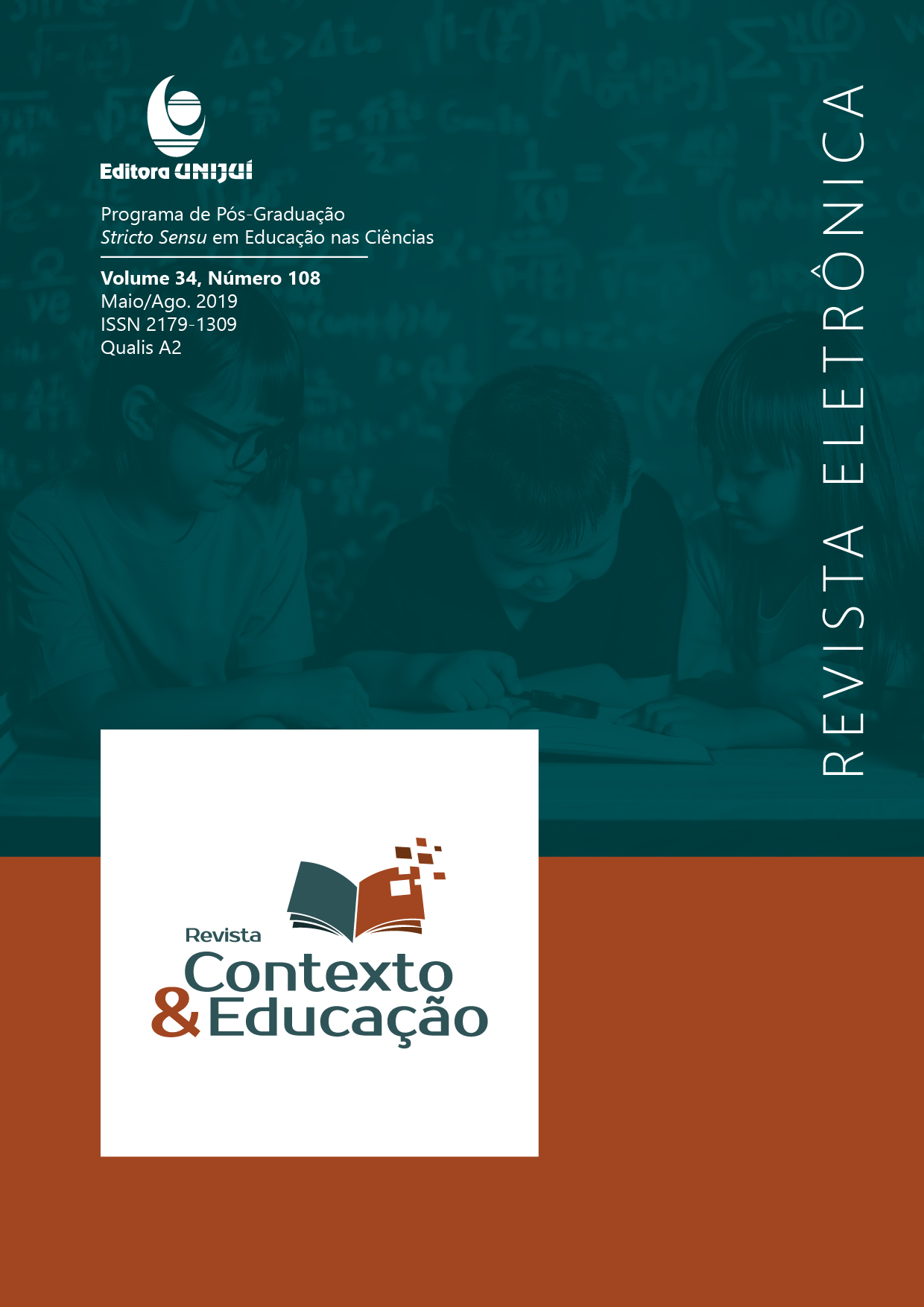A MULTIMODALIDADE E A INTERCULTURALIDADE NO ENSINO DO ESPANHOL: UMA ANÁLISE DO LIVRO DIDÁTICO CERCANÍA JOVEN
DOI:
https://doi.org/10.21527/2179-1309.2019.108.72-91Palavras-chave:
Interculturalidade. Letramento multimodal crítico. Livro didático. Língua espanhola.Resumo
As novas práticas sociais, que vêm emergindo na sociedade, têm dado origem a distintas formas de comunicação e novos letramentos, destacando-se dois tipos de multiplicidades decorrentes da sociedade contemporânea globalizada: a cultural e a textual. Diante disso, é objetivo deste trabalho investigar o modo como o livro didático Cercanía joven propõe a leitura dos textos multimodais a fim de promover a interculturalidade e o letramento crítico. Para fundamentar nossas análises, guiamo-nos pelas leituras de Araújo (2011), Descardeci (2002), Dionisio (2008), Kress e Van Leeuwen (2006), Rojo (2012), García Canclini (2009), Lima (2013), Santos (2004) dentre outros. Do ponto de vista metodológico, trata-se de uma pesquisa descritiva e interpretativista, de natureza qualitativa. O corpus da pesquisa é composto pela seção “Culturas en diálogo: nuestra cercanía”, do volume um do livro didático, a partir da qual foram obtidos os seguintes resultados: a referida seção tem como objetivo que o aluno desenvolva um diálogo entre sua cultura e a cultura dos países hispânicos, estabelecendo uma relação de interação e respeito, tal como propõe o princípio da alteridade. Contudo, em alguns momentos, pudemos compreender que os textos davam margem para uma exploração multimodal crítica, mas as atividades de interpretação não exploraram esse potencial.
Downloads
Publicado
Como Citar
Edição
Seção
Licença
Ao publicar na Revista Contexto & Educação, os autores concordam com os seguintes termos:
Os trabalhos seguem a licença Creative Commons Atribuição 4.0 Internacional (CC BY 4.0), que permite:
Compartilhar — copiar e redistribuir o material em qualquer meio ou formato;
Adaptar — remixar, transformar e criar a partir do material para qualquer fim, inclusive comercial.
Essas permissões são irrevogáveis, desde que respeitados os seguintes termos:
Atribuição — os autores devem ser devidamente creditados, com link para a licença e indicação de eventuais alterações realizadas.
Sem restrições adicionais — não podem ser aplicadas condições legais ou tecnológicas que restrinjam o uso permitido pela licença.
Avisos:
A licença não se aplica a elementos em domínio público ou cobertos por exceções legais.
A licença não garante todos os direitos necessários para usos específicos (ex.: direitos de imagem, privacidade ou morais).
A revista não se responsabiliza pelas opiniões expressas nos artigos, que são de exclusiva responsabilidade dos autores. O Editor, com o apoio do Comitê Editorial, reserva-se o direito de sugerir ou solicitar modificações quando necessário.
Somente serão aceitos artigos científicos originais, com resultados de pesquisas de interesse que não tenham sido publicados nem submetidos simultaneamente a outro periódico com o mesmo objetivo.
A menção a marcas comerciais ou produtos específicos destina-se apenas à identificação, sem qualquer vínculo promocional por parte dos autores ou da revista.
Contrato de Licença (para artigos publicados a partir de outubro/2025): Os autores mantém os direitos autorais sobre seu artigo, e concedem a Revista Contexto & Educação o direito de primeira publicação.


